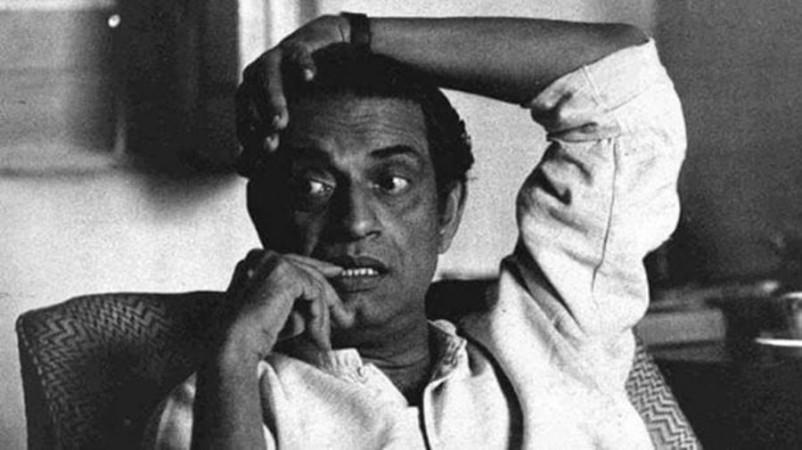It was the Apu Trilogy (Pather Panchali, Aparajito and Apur Sansar) that had established Satyajit Ray in the cinematic pantheon. Histories of India cinema will all agree that the works of Ray represented a radical break.
It started spreading new ways of producing and making films, cheaply, quickly and outside the mainstream), he popularised the use of lighter technologies, made more realistic, aesthetics, fashionable and introduced a new generation of directors, stars, cinematographers, producers and music composers to the world.

Even without historical knowledge about Bengal, India, the transformation of local and political culture, pre-Independence India and post-Independence India, you can enjoy the cinematic works of Satyajit Ray. Although, a little bit more knowledge about the historical, political situations, through, text, media or syllabus based knowledge would always serve a different conduit between you and the film.
Ray took four years to make the first film of Apu Trilogy
It took Ray four years to make the first film of Apu Trilogy, which was Pather Panchali. First, there was no money, even after slight financial stability, there would always be one producer who would try to teach Ray about the concept of 'mass' and how they are not 'into these types of films'. It took an entire book named 'Our Films Their Films' to make filmmaker rightly vent about the ways of the cinematic world and how sometimes they play a huge role in breaking your spirit.
Finally, when Pather Panchali happened, it became a universal appeal. Many termed it to be the eulogy of a third-world culture, but there were ideas of property, work, labour forces, working-class, hidden in the shots.
Durga was termed to be the thief, but what did she really steal? Mangoes, fruits from trees, from the gardens which belonged to the zamindars. But Durga never perceived trees to be someone's private property, can you really buy mother Nature? In the final shot when Apu throws away the beaded necklace, in the lake, the algae takes over, indicating that Durga after her death, was embraced by mother nature.
Once his cinema left the paddy fields of Pather Panchali, it reached the ghats of Benaras in Aparajito and finally the busy streets of Kolkata in Apur Sansar. The form of his cinema changed dramatically and unlike other directors, he did not stick to one form. He would narrate tales about Kings and Queens in Goopy Bagha Trilogy, the zamindars in Jalsagar, the perspective of the women in films such as Charulata and Devi and also explored the commercial glamour in the world of cinema, in Uttam Kumar starrer Nayak.
It is impossible to imagine any other actors in the cast of Nayak apart from Uttam Kumar who was genetically blessed with 'good looks, good-looks and good-looks', and a deep sense of erudition and stardom. What became noticeable was Ray's attempt to move into more concerns and work consistently with ideas rather than frames with feelings. His cinema was inspired by instigating by the changing political scenario erupting in post-Independent India from the 1950s to 1980s.
When the Naxalites communist party of India, made its presence felt, the consequent state brutalities were informed in his Calcutta based films, Pratidwandi, Seemabandhan. When former Prime Minister Indira Gandhi declared an emergency in 1975, every aspect of her fascism got reflected in Hirok Rajar Deshe, where a fascinating Soumitra Chatterjee, who played the role of a teacher acted as the voice which revolted against the fascist forces. Hirok Rajar Deshe was seen as a children's short story but there were various political innuendoes.
Satyajit Ray's cinema offers extremely interesting background material on the 'Bengal Renaissance and the Tagorian Synthesis,' and the influence has shaped in his humanist values. It wouldn't be completely wrong to say that the director went through two distinct phases. With Apu trilogy, Charulata, Ray's 'searching and finding phase' when he seemed to be more concentrated on arts and aesthetics. In his second period with films such as Kapurush, Mahapurush, there's a sense of emptiness and spiritual exhaustion.


!['Had denied Housefull franchise as they wanted me to wear a bikini': Tia Bajpai on turning down bold scripts [Exclusive] 'Had denied Housefull franchise as they wanted me to wear a bikini': Tia Bajpai on turning down bold scripts [Exclusive]](https://data1.ibtimes.co.in/en/full/806605/had-denied-housefull-franchise-they-wanted-me-wear-bikini-tia-bajpai-turning-down-bold.png?w=220&h=135&l=50&t=40)





!['Had denied Housefull franchise as they wanted me to wear a bikini': Tia Bajpai on turning down bold scripts [Exclusive]](https://data1.ibtimes.co.in/en/full/806605/had-denied-housefull-franchise-they-wanted-me-wear-bikini-tia-bajpai-turning-down-bold.png?w=220&h=138)
!['Had denied Housefull franchise as they wanted me to wear a bikini': Tia Bajpai on turning down bold scripts [Exclusive]](https://data1.ibtimes.co.in/en/full/806605/had-denied-housefull-franchise-they-wanted-me-wear-bikini-tia-bajpai-turning-down-bold.png?w=220&h=135)


![Nayanthara and Dhanush ignore each other as they attend wedding amid feud over Nayanthara's Netflix documentary row [Watch]](https://data1.ibtimes.co.in/en/full/806599/nayanthara-dhanush-ignore-each-other-they-attend-wedding-amid-feud-over-nayantharas-netflix.jpg?w=220&h=135)